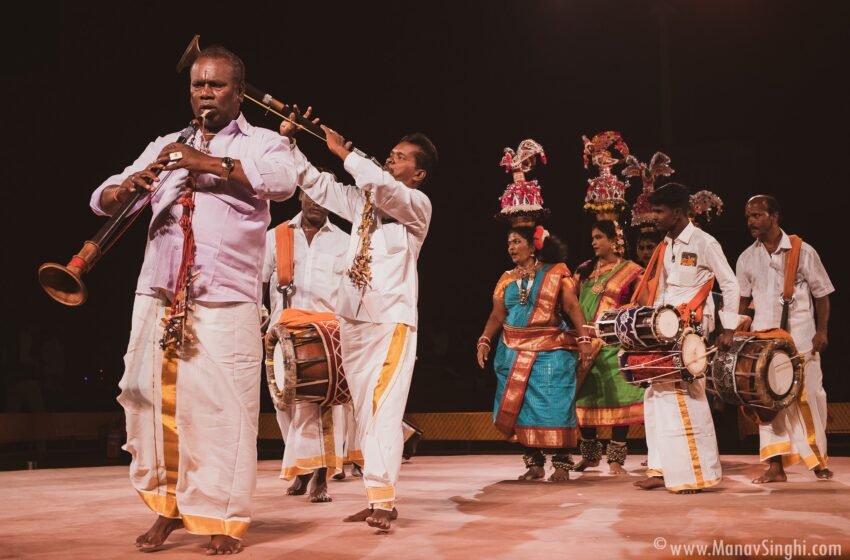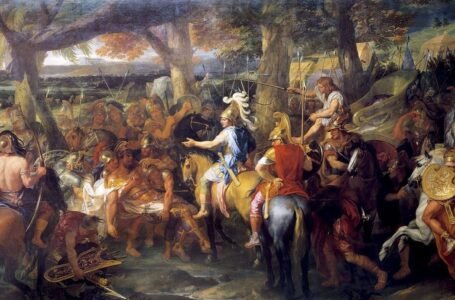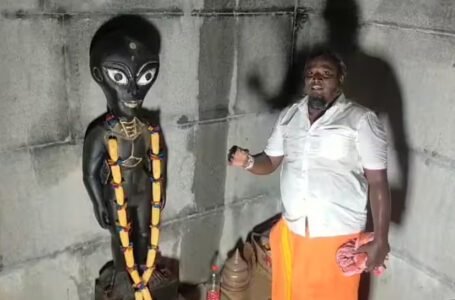Karakattam Songs: Melodic Hymns of Water and Rain Gods

Karakattam is a traditional Tamil folk dance that weaves music, rhythm, and worship together in honor of the life-giving power of water. The songs sung while dancing during Karakattam are of profound cultural and religious value, mostly in tribute to water and rain deities such as Mariamman, the rain goddess. The songs and performances have been a part of rural traditions of Tamil Nadu since centuries. But with the shift in the socio-cultural background, the traditional performance of the Karakattam songs has decreased, and there is a fear of losing this rich tradition. This blog discusses the origin of Karakattam, the musical and dance aspects, its significance in the worship of water deities, the causes of the decline, and its influence on Tamil culture in the present times.
Origins of Karakattam
Karakattam originated in the agrarian society of Tamil Nadu, where monsoon dependence on farming made rain a vital part of life. In order to attract good rain and thank the gods, villagers did Karakattam, a dance that combined balancing of pots (karakam) skillfully on the head with graceful steps. The dance grew up as a part of religious and community festivities, especially in Mariamman temples, who was believed to cause rain and shield against disease. This ancient dance style was not just a choreographed entertainment but an offering made with devotion and reverence. The music, in the form of Karakattam songs, was pivotal in evoking God’s blessings and establishing the rhythm pattern of the dance. These songs contain rich lyrics infused with folklore, mythology, and devotion, an epitome of the cultural richness of Tamil Nadu.
The Trailblazers of Karakattam
Over the years, a number of artists and performers have helped make Karakattam popular and ensured its survival through the ages. Some of the prominent ones include Raju Karakattam and others, who have been instrumental in keeping the tradition going. These trailblazers devoted their lives to learning and perfecting the art, infusing a dynamic momentum into performances while remaining faithful to its spiritual roots.
Whereas Karakattam was traditionally performed solely as an offering to the divine, in contemporary times, artists have carried it to broader platforms, incorporating innovations while holding on to the essence of the performance. Commercialization and shifts in entertainment choices have, however, resulted in a gradual weakening of the original aspects of Karakattam songs. What are Karakattam Songs and Dance?
The Karakattam songs are an integral part of the dance itself and act not only as a rhythmic accompaniment, but also as a vehicle for conveying stories. The songs typically recite stories from Hindu legends, praise the fertility-giving aspects of rain, and pray for the favor of Mariamman. They are classically sung in Tamil, with poetic rhyming verses intertwined with folk music so as to create an experiential feel.
The dance itself is a beautiful visual spectacle of balance, agility, and dedication. Dancers, attired in vibrant clothing, move elegantly while balancing ornate pots on their heads. The addition of quick steps, elaborate hand movements, and emotive facial expressions makes Karakattam an engaging spectacle. The rhythmic rhythms of traditional instruments such as the thavil and urumi melam accompany the songs, increasing the energy of the performance.
Linkage to Water and Rain Gods
The core of Karakattam is its reverence for rain and water deities. Tamil Nadu, a state highly reliant on monsoon rains, has a rich cultural affinity with the worship of water. Mariamman, usually shown holding a vessel of water, represents the fertility and destructive powers of rain. The artists sing about their devotion through Karakattam songs, asking for bountiful rains, fertile land, and safeguards against droughts.
The Karakattam song lyrics often portray the beauty of rain, the happiness it gives to farmers, and its importance in maintaining life. The songs also remind us of the coexistence of human beings and nature and the importance of preserving and respecting natural resources.Why Are Karakattam Songs Less Performed Today?
Though it has cultural importance, the actual performance of Karakattam songs declined in the recent past. Various reasons have led to it, such as:
– Modernization and Urbanization: As people trend towards urbanization, old art forms have fallen behind, as the younger generations are less interested in folk practices of rural life.
– Commercialization of Folk Arts: Most performances nowadays are focused on entertainment rather than religious worship, and hence changes in song lyrics and steps for wider appeal.
– Decline in Agrarian Festivals: With the decreased importance of agricultural festivals, the need for traditional Karakattam performances has declined.
– Influence of Cinema and Digital Media: The emergence of cinema, television, and digital media has dominated folk arts, and it becomes more difficult for traditional art forms like Karakattam to maintain their initial form.
– Lack of Institutional Support: Unlike classical arts, folk traditions are usually not granted sufficient institutional or governmental support, causing a decline in patronage.
Although it has cultural importance, the original performance of Karakattam songs has declined over the past few years. There are a number of reasons behind this, such as:
Impact of the Decline
The decreased performance of genuine Karakattam songs has serious cultural consequences. For one, it leads to the erosion over time of a rich oral heritage which existed for generations. The folk culture and mythological narratives contained in the songs stand the risk of being lost as later generations abandon traditional practice.
Also, the declining role of Karakattam in religious and community festivals deteriorates the common cultural identity of Tamil Nadu’s rural communities. The songs, which were once a vehicle of cultural learning, are being displaced by popular entertainment, resulting in the depletion of indigenous art forms.Furthermore, the decline of Karakattam performances also affects the livelihoods of folk artists who use these traditional arts as their source of livelihood. With reduced demand, fewer individuals are willing to learn and conserve the art, leading to a gap in cultural transmission.
Revival and Preservation Efforts
In spite of all these challenges, efforts are being made to restore Karakattam and its traditional songs. Many cultural organizations, folk artistes, and enthusiasts are making concerted efforts to preserve this priceless art form. Some of these initiatives include:
– Conducting Karakattam workshops and festivals to promote youth involvement.
– Including folk performances in school and college cultural activities.
– Documenting and digitizing traditional Karakattam songs to share them with a larger populace.
– Requesting government recognition and grants to sustain folk artists.
– Creating awareness regarding the significance of conserving indigenous art forms through media and narration.
Through the incorporation of these initiatives into mainstream cultural conversation, Karakattam can regain its glory and continue to flourish as a representation of Tamil heritage.
Conclusion
Karakattam songs, in their deeply rooted association with water and rain gods, represent the cultural and spiritual way of life of Tamil Nadu. The soothing lyrics blended with the hypnotic dance comprise a strong praise for the natural powers that provide sustenance for life. Yet, the declining custom of performing these songs in a true manner poses questions regarding how to preserve this much-loved tradition. While the influence of modernization and entertainment culture has affected its loss, conscious rehabilitation and awareness campaigns can aid the resurgence of Karakattam. Through an embracement of this art, Tamil Nadu can promote its ongoing continuity and popularity such that its subsequent generations enjoy experiencing and perceiving the richness and faith reflected in Karakattam music. It is only by making such efforts that we can sustain this lively tradition, so that the melody of Karakattam can still reverberate in the villages and temples of Tamil Nadu in the years to come.


